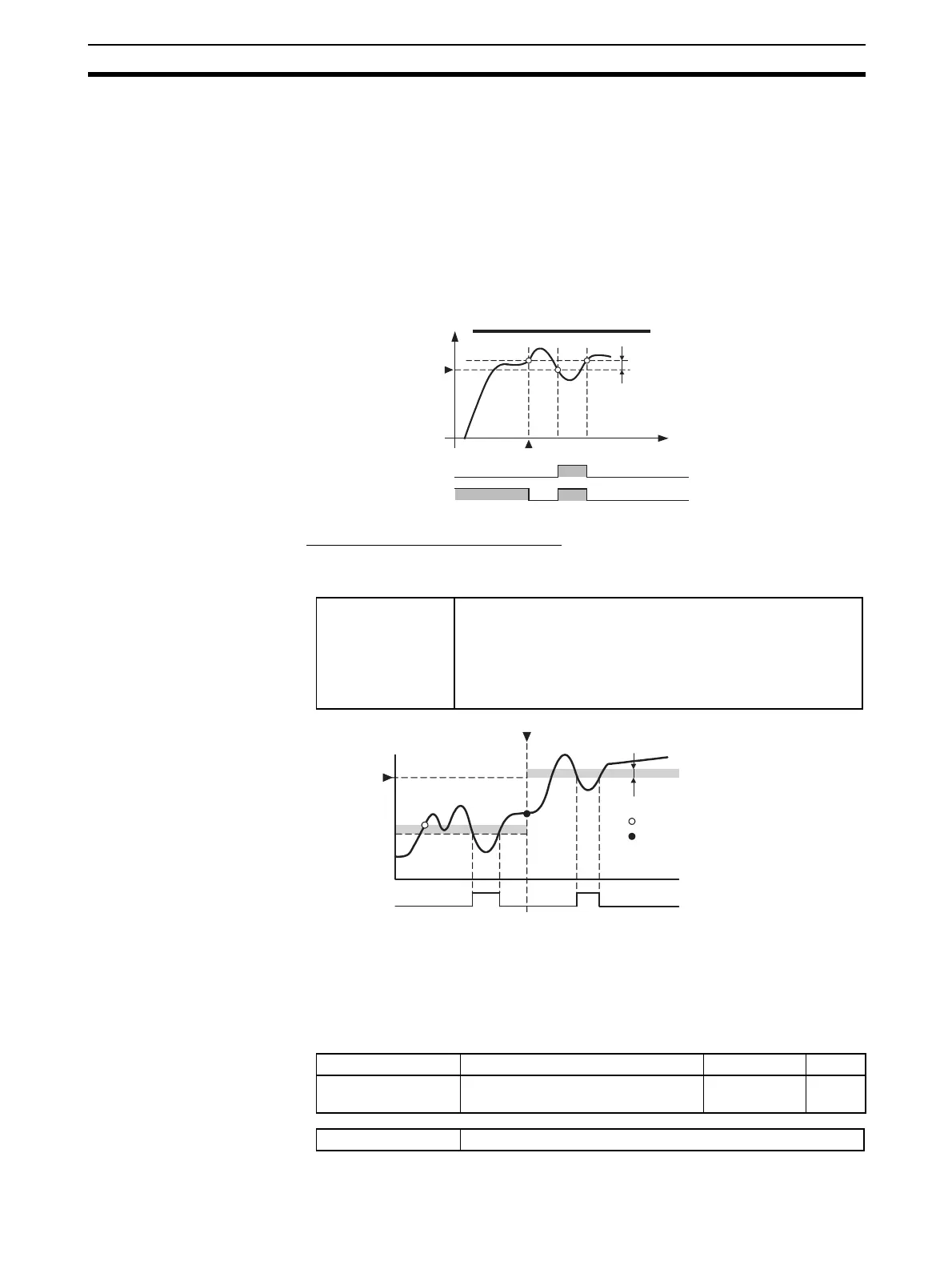83
Setting Alarm Specifications Section 4-4
4-4-4 Standby Sequence
The standby sequence can be used so that an alarm will not be output until
the process value leaves the alarm range once and then enters it again.
For example, with a lower limit alarm, the process value will normally be below
the set point, i.e., within the alarm range, when the power supply is turned
ON, causing an alarm to be output. If the lower limit alarm with standby
sequence is selected, an alarm will not be output until the process value
increases above the alarm set value, i.e., until it leaves the alarm range, and
then falls back below the alarm value.
■ Restarting the Standby Sequence
• If an alarm is output, the standby sequence is canceled, but the standby
sequence will start again after any of the following operations.
4-4-5 Alarm Latch
The alarm latch can be used to keep an alarm ON once it goes ON.
The latch can be released to turn OFF the alarm by executing an operation
command (Latch Cancel or Software Reset). Refer to 6-4-11 Operation Com-
mands for details on the operation commands.
Note This parameter can be set only when operation is stopped.
Standby sequence canceled
Alarm value
Alarm type: Lower-limit alarm with
standby sequence
Time
Alarm hysteresis
Alarms
(with standby sequence)
Alarms
(without standby sequence)
Process
value
Restart conditions • When control starts (including power ON) or when the alarm
value (upper/lower-limit alarm value) or input shift value
(upper/lower-limit temperature input shift value) is changed
• When the set point is changed
• When the bank is switched
• When the variable type is changed
Alarm value
(after change)
Alarm hysteresis
Alarm output
SP changed
Alarm
: Standby sequence canceled
: Standby sequence restarted
Variable type Parameter name Setting range Default
E3/A3 Alarm 1 to 3 Latch (Channel) 0: Disabled
1: Enabled
0
Conditions for use The alarm type must not be set to 0.

